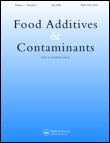
Food Additives & Contaminants Part B-Surveillance
Scope & Guideline
Advancing food safety through rigorous surveillance.
Introduction
Aims and Scopes
- Food Safety Surveillance:
The journal emphasizes research on monitoring and assessing the presence of harmful substances in food, including pesticides, heavy metals, mycotoxins, and other contaminants. - Risk Assessment:
A core aspect of the journal's scope involves evaluating the health risks associated with food contaminants, providing critical insights into dietary exposure and potential health implications. - Analytical Method Development:
There is a consistent focus on the development and application of advanced analytical techniques for detecting food additives and contaminants, such as LC-MS/MS, HRMS, and ICP-MS. - Public Health Implications:
Research published in the journal often addresses the broader public health implications of food safety, including dietary risks and recommendations for consumer safety. - Geographical and Environmental Impact Studies:
The journal includes studies that analyze the geographical distribution of contaminants and the environmental factors influencing food safety, highlighting regional patterns and risks.
Trending and Emerging
- Co-occurrence of Contaminants:
Recent publications increasingly focus on the simultaneous presence of multiple contaminants in food, emphasizing the importance of understanding combined exposure risks. - Health Risk Assessments:
There is a growing trend towards comprehensive health risk assessments that evaluate the impact of various food contaminants on specific populations, reflecting a more targeted approach to public health. - Emerging Contaminants:
Research on new and emerging contaminants, such as PFAS and novel mycotoxins, is on the rise, highlighting the need for updated surveillance methods and regulatory frameworks. - Regional Studies:
An increased focus on regional studies that assess food safety issues in specific geographic contexts is evident, which helps in tailoring interventions and policies to local needs. - Consumer Safety and Awareness:
Emerging themes also include consumer awareness and safety, with studies examining the impact of labeling and public perception on food safety practices.
Declining or Waning
- Traditional Food Additives:
There has been a noticeable decrease in studies solely focused on traditional food additives, as the emphasis has shifted towards contaminants and their health impacts. - Single Contaminant Studies:
Research focusing exclusively on individual contaminants, without considering co-occurrence or cumulative effects, is becoming less frequent, as multi-contaminant analysis gains preference. - Historical Data Analysis:
Papers relying heavily on historical data without current relevance or context are less common, indicating a move towards more timely and applicable research findings.
Similar Journals
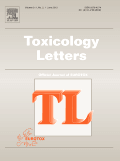
TOXICOLOGY LETTERS
Connecting research and practice for a healthier world.TOXICOLOGY LETTERS is a prominent journal dedicated to advancing the field of toxicology, providing a platform for high-quality research and reviews that explore the effects of chemical substances on biological systems. Published by Elsevier Ireland Ltd, this peer-reviewed journal has established itself as a vital resource in toxicological research since its inception in 1977, with a convergence of studies extending to 2024. With an impressive Scopus ranking, positioned at #28 out of 133 in the Toxicology category, TOXICOLOGY LETTERS garners a respectable percentile of 79, highlighting its significance in the academic community. Although it is not an open-access journal, its research is accessible through institutional subscriptions, ensuring that critical insights into human health and environmental safety are disseminated effectively. Being categorized in the Q2 quartile in both Medicine (miscellaneous) and Toxicology for 2023 further emphasizes its relevance and impact in these fields. This journal aims to foster collaboration between researchers and professionals, encouraging the exploration of innovative solutions to chemical hazards and the promotion of safer practices in pharmacology and toxicology.
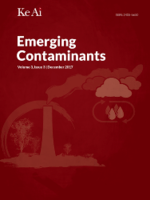
Emerging Contaminants
Leading the charge in contaminant research and remediation.Emerging Contaminants is a leading international journal dedicated to the exploration and analysis of novel pollutants, their effects, and the methodologies for their detection and remediation. Published by KEAI PUBLISHING LTD in China, this Open Access journal has been at the forefront of scientific discourse since its inception in 2015, allowing unrestricted access to cutting-edge research. With an impressive categorization in the top Q1 quartile across diverse fields, including Health, Toxicology and Mutagenesis, and Public Health, it ranks remarkably high—41st out of 665 in Public Health and 10th out of 133 in Toxicology according to Scopus metrics, demonstrating its vital role in advancing our understanding of environmental health risks. By bridging the gap between academia and practical applications, Emerging Contaminants not only enriches the scientific community but also serves as an essential resource for policymakers and industry leaders seeking effective solutions to environmental challenges. Researchers, professionals, and students alike are encouraged to engage with the journal’s comprehensive studies and findings, contributing to a sustainable future.

JOURNAL OF ANALYTICAL CHEMISTRY
Shaping the Future of Analytical PracticesJOURNAL OF ANALYTICAL CHEMISTRY, published by PLEIADES PUBLISHING INC, stands as a pivotal resource in the field of analytical chemistry, offering an innovative platform for researchers, professionals, and students to advance their knowledge and contribute to the discourse within the discipline. With an ISSN of 1061-9348 and an E-ISSN of 1608-3199, this journal features a focused exploration of analytical methodologies, instrumentation developments, and applications across various domains, contributing to practical and theoretical advancements in the field. Currently ranked in the Q3 category in Analytical Chemistry with a Scopus rank of #111 out of 156, it provides critical insights and innovation strategies for professionals aiming to enhance their analytical capabilities. Access to the journal is through standard subscription models, and it covers an extensive range of topics pertinent to the discipline from 1996 to 2024. Engage with the JOURNAL OF ANALYTICAL CHEMISTRY to be part of a vibrant research community dedicated to push the boundaries of analytical practices.
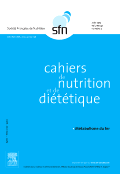
CAHIERS DE NUTRITION ET DE DIETETIQUE
Exploring the Frontiers of Nutrition and DieteticsCAHIERS DE NUTRITION ET DE DIETETIQUE, published by MASSON EDITEUR, is a prestigious journal in the fields of Nutrition and Dietetics, aiming to disseminate critical research and innovative practices from 1973 to the present. This journal serves as a platform for researchers, professionals, and students to explore key developments and emerging trends in the dietary sciences. Although currently classified in the Q4 quartile for both Medicine and Nutrition and Dietetics, its commitment to fostering academic discourse is evident through its rigorous publication process. With a focus on enhancing understanding of nutrition-related issues, CAHIERS DE NUTRITION ET DE DIETETIQUE remains an essential resource for anyone engaged in health and dietary research. Located in France, the journal continues to contribute to the scholarly community, despite the absence of Open Access options, making it a significant publication in its category.

Toxics
Elevating standards in chemical safety and health.Toxics is a leading international journal published by MDPI that has been dedicated to advancing the knowledge in the fields of toxicology, environmental health, and chemical safety since its inception in 2013. With an impressive Open Access model, it ensures that all research findings are readily available to a global audience, fostering collaboration and innovation across academia and industry. The journal is esteemed for its rigorous peer-review process and holds notable rankings, including Q1 status in Chemical Health and Safety and Q2 in both Health, Toxicology and Mutagenesis and Toxicology, reflecting its impact on critical research areas. Based in Basel, Switzerland, Toxics provides a platform for researchers, professionals, and students to disseminate significant findings on the implications of toxic substances in health and the environment, aiming to improve public health outcomes and inform regulatory decisions. With its ongoing commitment to high-quality research and relevant access options, Toxics continues to be an essential resource in the domain of toxicology and environmental sciences.

CHROMATOGRAPHIA
Unraveling Complexities through ChromatographyCHROMATOGRAPHIA is a renowned scholarly journal published by Springer Heidelberg, specializing in the field of analytical chemistry, biochemistry, and organic chemistry since its inception in 1968. With its ISSN 0009-5893 and E-ISSN 1612-1112, the journal has maintained a robust profile, currently ranking in the Q3 and Q4 quartiles within significant Chemistry categories. Aimed at researchers, professionals, and students, CHROMATOGRAPHIA serves as a critical platform for disseminating innovative research, methodologies, and advancements related to chromatography and its applications in various scientific fields. While the journal is not open access, it offers significant visibility and scholarly contribution opportunities, making it an essential resource for those engaged in the vibrant intersection of chemistry and biochemistry.
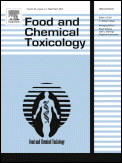
FOOD AND CHEMICAL TOXICOLOGY
Championing research that protects consumers and environments.FOOD AND CHEMICAL TOXICOLOGY, published by Pergamon-Elsevier Science Ltd, is a prestigious journal with a significant impact in the fields of food science, medicine, and toxicology, reflecting its Q1 and Q2 quartile rankings in various categories as of 2023. Established in 1982, this journal continues to serve as an essential platform for disseminating high-quality research focused on the toxicological assessment of foods and chemicals, aiming to advance knowledge that affects public health and safety. With a pivotal role in integrating diverse disciplines, including pharmacology and agricultural sciences, the journal ranks impressively within the top percentiles—specifically 95th in Toxicology and 92nd in Food Science on the Scopus metrics. Though it operates on a traditional subscription model, the journal is committed to providing valuable insights and findings to researchers, professionals, and students across the globe, making it a vital resource in the ongoing discourse around food safety and environmental health. Its comprehensive scope underscores its importance in shaping evidence-based policies and practices.
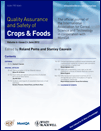
Quality Assurance and Safety of Crops & Foods
Innovating solutions for sustainable food production.Quality Assurance and Safety of Crops & Foods is a leading peer-reviewed journal, published by CODON PUBLICATIONS, dedicated to advancing the fields of Agronomy and Crop Science and Food Science. Since its inception in 2009, this journal has established itself as a crucial platform for researchers, professionals, and students, focusing on the vital intersection of agricultural safety and food quality. With a commendable impact factor and a current Scopus ranking placing it in the top quartiles of its field (Q2 in 2023), it serves as an essential resource for those committed to ensuring the safety and quality of global food supplies. The journal provides open access options to enhance the dissemination and accessibility of research findings, thus fostering collaborative efforts to tackle contemporary challenges in food production and safety. By showcasing innovative methodologies and cutting-edge research, Quality Assurance and Safety of Crops & Foods not only contributes to scientific discourse but also plays a pivotal role in informing policy and practice in sustainable agricultural practices.

World Mycotoxin Journal
Connecting researchers to combat mycotoxin challenges worldwide.The World Mycotoxin Journal, published by Wageningen Academic Publishers, stands at the forefront of research in the field of mycotoxins, drawing particular attention to their implications in food science, public health, and environmental safety. With an ISSN of 1875-0710 and an E-ISSN of 1875-0796, this journal has continuously contributed to advancing knowledge since its inception and will remain a vital source of information through 2024. Ranked in Q2 within Food Science and achieving notable positions in Public Health and Toxicology, it offers an impactful forum for scholars and professionals worldwide. The journal’s Scopus rankings reflect its importance, with Public Health receiving a 68th percentile ranking, further underscoring the relevance of mycotoxin research in mitigating health risks. Researchers and students alike will benefit from its rigorous peer-reviewed articles, providing access to cutting-edge studies and overviews that address the complexities of mycotoxins and their far-reaching effects.
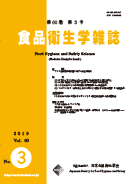
Food Hygiene and Safety Science
Empowering Knowledge to Enhance Food SafetyFood Hygiene and Safety Science is a pivotal academic journal published in Japan by the esteemed FOOD HYGIENE & SAFETY. With its ISSN 0015-6426, this journal operates within the broad domains of food science, public health, and medicine, strategically addressing the critical issues surrounding food hygiene and safety. With a notable history spanning from 1960 to 2024, it has become an essential resource in these fields, currently holding a Q3 category ranking in Food Science as well as in Medicine (Miscellaneous) and Public Health, Environmental and Occupational Health, according to the 2023 evaluations. Although access options may vary, the journal is committed to disseminating vital research findings to enhance food safety practices on a global scale. With its focus on advancing knowledge and sharing innovative practices, Food Hygiene and Safety Science serves as a vital platform for researchers, professionals, and students dedicated to improving food safety standards and public health outcomes.